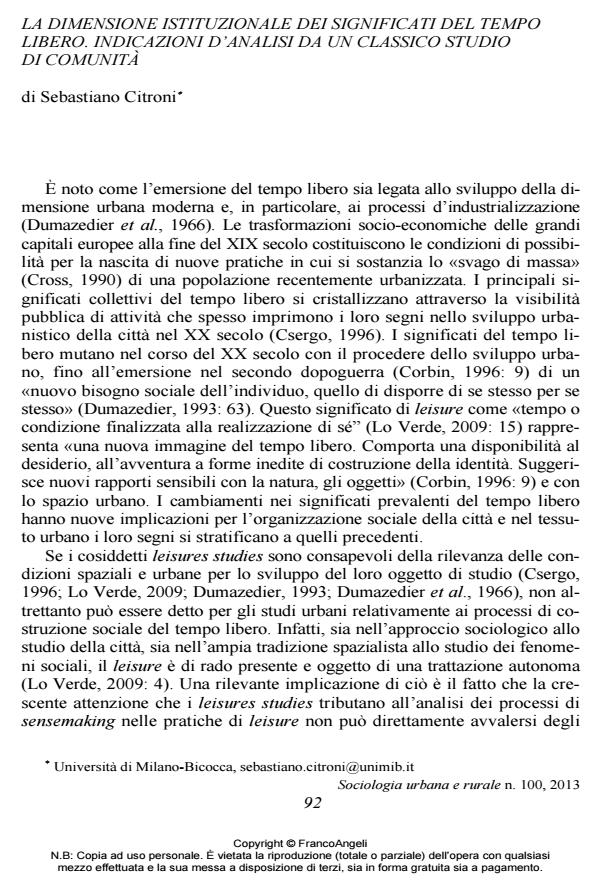The Institutional Dimension of the Meanings of Leisure. Directions of Analysis from a Classical Community Study
Journal title SOCIOLOGIA URBANA E RURALE
Author/s Sebastiano Citroni
Publishing Year 2013 Issue 2013/100
Language Italian Pages 13 P. 92-104 File size 234 KB
DOI 10.3280/SUR2013-100007
DOI is like a bar code for intellectual property: to have more infomation
click here
Below, you can see the article first page
If you want to buy this article in PDF format, you can do it, following the instructions to buy download credits

FrancoAngeli is member of Publishers International Linking Association, Inc (PILA), a not-for-profit association which run the CrossRef service enabling links to and from online scholarly content.
Although leisure has firstly developed in the city, urban sociology seems to have paid little attention to this phenomenon. Nowadays, the growth of leisure studies focus more and more on sensemaking processes ignoring their institutional dimension. Such a dimension can be analyzed making value of the analysis of leisure included in the classical community study conducted by Pizzorno in the 1960s.
Keywords: Leisure, Sensemaking, Institutionalization , Space-Time Conditions, Quality of Life, Urban Sociology.
Sebastiano Citroni, La dimensione istituzionale dei significati del tempo libero. indicazioni d’analisi da un classico studio di comunità in "SOCIOLOGIA URBANA E RURALE" 100/2013, pp 92-104, DOI: 10.3280/SUR2013-100007